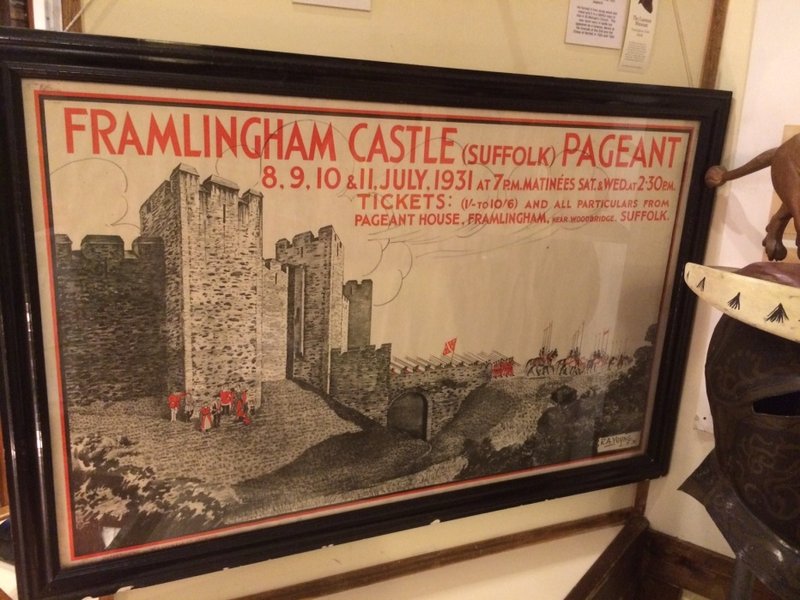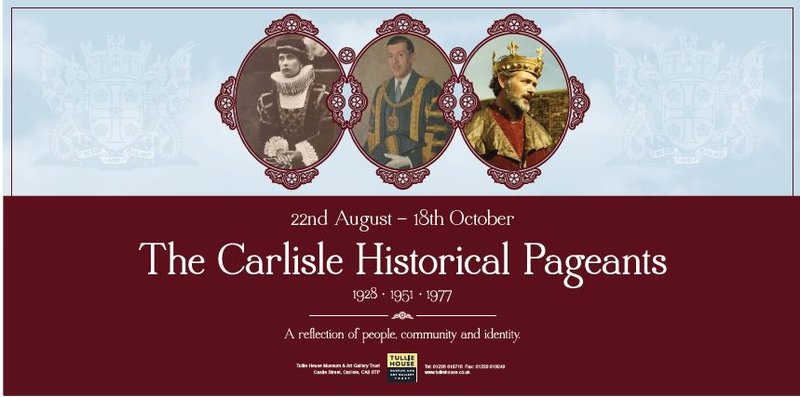Carlisle Talks Pageants!
We are grateful to Ken for sharing his wonderful pageant memorabilia with the project, including this photo of himself cutting a very dashing figure!
St. Albans Pageant, 1907: Queen Elizabeth at Gorhambury.
Courtesy of St. Albans Museums.
The project team produced regular blog posts over the course of the period 2013-2017 (covering the years funded by the first AHRC) grant. These blog posts can be found below.
We are grateful to Ken for sharing his wonderful pageant memorabilia with the project, including this photo of himself cutting a very dashing figure!
I recently enjoyed a much-needed weekend away in east Suffolk, taking in, among other things, the Aldeburgh festival, Southwold pier and Framlingham castle. It was in the castle – or more specifically in the Lanman museum of local history within the castle – that I stumbled upon a poster advertising the Framlingham pageant of 1931.

Above: Poster in the Lanman
Museum advertising the Framlingham pageant.
Performed in the grounds of the castle, the pageant seems to have ...

In 1928, 1951 and 1977 the people of Carlisle staged large and highly successful historical pageants. Thousands of Cumbrian citizens took part in these events which depicted the colourful history of a part of the UK which has always been important in the national story of the British Isles. From Roman times to the coming of the railways, Carlisle was a place of strategic significance and its citizens are proud of their past. This exhibition ...
Last night (Monday 8 June) Tom and I went to Bury St Edmunds for the third of our pageants film nights in Moyse’s Hall Museum, where our exhibition is currently being staged. Forty-seven people were present to watch the films, meaning that more than 130 have attended the three film nights. Half a dozen or more of those present on Monday had performed in one of the pageants.
We showed three films. The first ...
Despite glorious summer sunshine, there was an excellent turn-out for the St Albans Pageant Study Day on 6 June. It seems pageant enthusiasm runs high here, just as we have found it does in Bury St Edmunds! Many people had brought along pageant-related memorabilia and memories. Peter Swinson – son of pageant-master Cyril Swinson – had brought a wonderful silk scarf from the 1953 pageant. Featuring lively drawings of some of the main characters – including Boudica, of ...
On Friday 22nd June we staged our first film evening at Moyse's Hall. We were blown away by the enthusiasm for this event - 50 people came, a full capacity, and our other two showings are equally booked out. After Paul introduced our project, gave a description of the eruption of 'pageant fever' across Britain in the early twentieth century, including Bury St Edmunds's own 1907 pageant, I played a few clips from the ...
During the initial burst of 'pageant fever', souvenirs were big business. Louis Napoleon Parker always stressed that the point of his 'folk-plays' was not to make money, but to instead bring the community together, dissolving distinctions of class (if only momentarily!). But plenty of official and unofficial vendors realised the potential profits that could be made. The ubiquitous souvenir of pageantry throughout the twentieth century has been the illustrated and colourful programme. Almost always costing ...
We had a team visit to Bury St Edmunds on Saturday, for a ’59-ers reunion event. Bury St Edmunds had major historical pageants in 1907 and 1959, and a smaller-scale event in 1970, and we currently have an exhibition on about these in Moyse’s Hall. Linda, Mark and I were excited to see this in situ, and to get the chance to pose with our large-size cut out of Boudicca. As it was a ...
Christopher Ede, by the time he took on the important role of pageant-master at Bury St Edmunds in 1959, was a man at the top of his game – known throughout Britain as the leading producer of pageants. He had actually started his working life as an organ-builder. One work trip took the University of Cambridge around 1931, when he was about 17, where he helped with the organ of King’s College Chapel. While in ...
by Mark Freeman
I have been spending some time this week working on our paper about depictions of the First World War in historical pageants. I’ve blogged about this before, and have enjoyed returning to this intriguing topic. How and why did pageant-masters and script-writers portray the war in its immediate aftermath?
When I wrote my article on historical pageants in twentieth-century Britain, focusing on the string of pageants staged at St Albans in ...